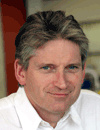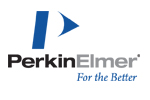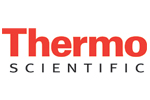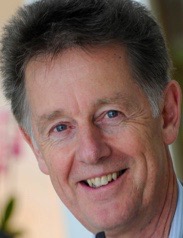Other Track AgendasAdvances in Biodetection & Biosensors | Advances in Microarray Technology | Advances in Protein Crystallography | Advances in Separation Technology | AgriGenomics Congress | Lab-on-a-Chip European Congress | Next-Gen Sequencing Europe | Screening Europe - HCS and Assays | Screening Europe - HTS & Compound Management | World Biobanking Summit |

Thursday, 30 June 201108:00 | Registration | |
Session: Next Generation Biosensors and Biodetection Techniques |
| | 09:30 |  | Keynote Presentation Borrowing from Nature - Next Generation Biomimetic Analytical Platforms
Dermot Diamond, Professor, Principal Investigator, Insight Centre for Data Analytics, National Centre for Sensor Research, Dublin City University, Ireland
The ‘Internet of Things’ envisages ubiquitous networks of millions of embedded sensors. Currently chem/bio-sensing are peripheral to this vision due to the complexity of the technology. To bridge the gap between current capability and future demand, new concepts in molecular sensing will emerge underpinned by revolutionary breakthroughs in materials science. |
| 10:00 | Beyond Glucose: The Move Towards System Integration in Biosensors
Jeff Newman, Programme Director, Cranfield University, United Kingdom
| 10:30 | Coffee Break and Networking in the Exhibition Hall | 11:15 | Capacitive Biosensors for Ultrasensitive Analyses
Bo Mattiasson, Professor, Lund University, Sweden
A capacitive biosensor with high sensitivity is presented. Assays of bacterial toxins and viral capsid proteins have been carried out with high sensitivity. The technology and the results will be presented. | 11:45 | An Integrated Intracellular Optical and Extracellular Electrochemical Sensing Platform for the Study of Reactive Oxygen Species (ROS) Based Cellular Interactions
Philip Manning, Scientist, University of Newcastle, United Kingdom
This presentation summarises the development of an integrated sensing platform that allows the simultaneous and real-time detection of reactive oxygen species production in both intracellular and extracellular environments. | 12:15 | Technology Spotlight | 12:30 | Lunch and Networking in the Exhibition Hall | 12:45 |  Free Workshop Free Workshop
Advancement of Separation, Purification and Crystallography from Agilent Technologies
,
| 13:30 |  Free Workshop Free Workshop
High Content Screening for Compounds and Genes Affecting Bacterial and Viral Infections
,
| 13:30 | Poster Session | 14:15 | Advances in Biosensor Based Capabilities of Detecting Food Contamination
Christopher Elliott, Director/Professor, Queen’s University Belfast, United Kingdom
The need for rapid detection of food contaminants is of immense important to protect consumers and the integrity of the food supply chain. Biosensor technologies can help deliver this. An overview of current progress and remaining challenges will be presented. | 14:45 | Chemical Restriction Length Polymorphism (CLFP) for Detection and Characterization of Bacterial Pathogens
Byron Stecher, Assistant Professor, Iowa State University, United States of America
We report the use of a new method, Chemical Restriction Length Polymorphism (CLFP) for the rapid characterization of bacterial pathogens. An example is given of how CLFP was used for detection and detailed characterization of both generic Salmonella and Salmonella subspecies I. | 15:15 | Coffee Break and Networking in the Exhibition Hall | 16:00 | Investigating the Kinetics of cAMP Accumulation in Human Primary Cells Using a Live-Cell cAMP Biosensor
Elizabeth Rosethorne, Investigator, Novartis, United States of America
Long acting Beta-2 adrenergic receptor agonists (LABA’s) and more recently ultra-LABA’s play a central role in the treatment of COPD however many of the currently available therapies have very different profiles in terms of their time to elicit a bronchodilatory response in the clinic. | 16:30 | Probing of NAD(P)H Availability in Living Yeast Cells Using a Microfluidic Electrochemical Sensor Array
Natalie Kostesha, Post Doctor, Technical University of Denmark, Denmark
The presented work is focused on the development and application of such miniaturized electrochemical sensors for simultaneous real-time monitoring of the dynamics of intracellular redox processes in genetically modified yeast cells. | 17:00 | Nanopore Sensors
Joshua Edel, Professor, Imperial College London, United Kingdom
We report on the fabrication and characterization of a DNA nanopore detector with integrated tunnelling electrodes for use as a possible route to high throughput DNA sequencing. | 17:30 | Drinks Reception |
Friday, 1 July 201108:00 |  Free Workshop Free Workshop
PCR without DNA purification – Thermo Scientific Direct PCR
,
| |
Session: Point of Care and Field Ready Pathogen Detection Devices |
| | 09:30 |  | Keynote Presentation Recent Advances in Detection and Biosensors
Christopher Lowe, Professor, University of Cambridge, Director, Cambridge Academy of Therapeutic Sciences, United Kingdom
Many extravagant claims have been made in the past two decades about the likely impact of biosensors on the diagnostics industry: In reality, the current market size for biosensors represents ~14% of the global diagnostics market and is dominated entirely by sensors for one analyte, glucose. This presentation looks at the need for, and advantages of biosensors, the technology that has been developed over the past two decades to address these perceived needs, but, in reality, has failed to do so, and describes newer technologies which may circumvent the problems and suggests how they are likely to have a much more significant impact in the future, particularly in sectors such as medical diagnostics and biodetection. Examples of optical and acoustic technologies will be given. |
| 10:00 | Molecular Pathogen Detection and the Challenge of Preanalytics for POCT
Till Bachmann, Reader, University of Edinburgh, United Kingdom
MDx at point of care at competitive costs remains an unmatched task which is mostly defined by the requirement of molecular detection technologies for highly processed and pure samples. We addressed this task at the level of sensitivity, specificity, and kinetics of the implemented biochip technologies. | 10:30 | Coffee Break and Networking in the Exhibition Hall | 11:15 | BSI Performs Rapid and Quantitative Serological Assays: Prospects For Use in the Near-Patient Setting and the Field
Amanda Kussrow, Senior Research Fellow, Vanderbilt University, United States of America
| 11:45 | Magnetic Bead-Based Lab-on-a-chip systems For Rapid Detection and Identification of Avian Influenza Virus
Dang Duong Bang, Head, Technical University Of Denmark, Denmark
A general introduction of the magnetic bead-based systems and examples of application of the method as the results of different National and EU funded projects at the Laminate (DTU-Vet) and the BioLabChip group (DTU-Nanotech) and other partners from the EU will be presented. | 12:15 | Lunch and Networking in the Exhibition Hall | 12:45 |  Free Workshop Free Workshop
Glosensor Technology: Intracellular Biosensors to Detect Signal Transduction in Living Cells
,
| 13:30 |  Free Workshop Free Workshop
Automatic High Content Screening for Life Sciences
,
| 13:30 | Poster Session | 14:15 | Diagnostics Using Nanobioelectronics Based Sensing Systems
Alfredo Muniz, Postdoctoral Researcher, Institut Catala de Nanociencia i Nanotecnologia, Spain
Recent advances in the field of nanobioelectronics based sensing systems that use either labeling with nanoparticles or even label-free technologies such as nanochannels will be shown. The developed devices have special interest for point of care diagnostics between other industries. | 14:45 | switchSENSE – A Novel Biosensing Principle to Detect and Analyze Molecules on a Chip
Ulrich Rant, Group Leader, Technical University of Munich, Germany
The implications of the switching dynamics measurement for a novel type of on-chip protein analysis will be discussed, in particular with respect to the engineering of antibodies. | 15:15 | Coffee Break and Networking in the Exhibition Hall | 16:00 | Biotests for Hazard Characterization of Waste
Reinhilde Weltens, VITO, VITO, Belgium
Biotests are used for hazard assessment of a variety of waste materials to demonstrate how biotests can provide information on the intrinsic toxicity of waste and how their results can be used for hazard classificatioin of waste. | 16:30 | Optical Classification of Human Embryonic Stem Cells
Tracy Melvin, Researcher, University of Southampton, United Kingdom
Optical approaches have been explored to enable the undifferentiated to be distinguished from differentiated stem cells. Our methods combine optical measurements, modelling and data analysis. This technique provides a novel approach with the potential for identification and sorting of stem cells. | 17:00 | Close of Conference |
|

 Add to Calendar ▼2011-06-30 00:00:002011-07-01 00:00:00Europe/LondonAdvances in Biodetection and BiosensorsSELECTBIOenquiries@selectbiosciences.com
Add to Calendar ▼2011-06-30 00:00:002011-07-01 00:00:00Europe/LondonAdvances in Biodetection and BiosensorsSELECTBIOenquiries@selectbiosciences.com